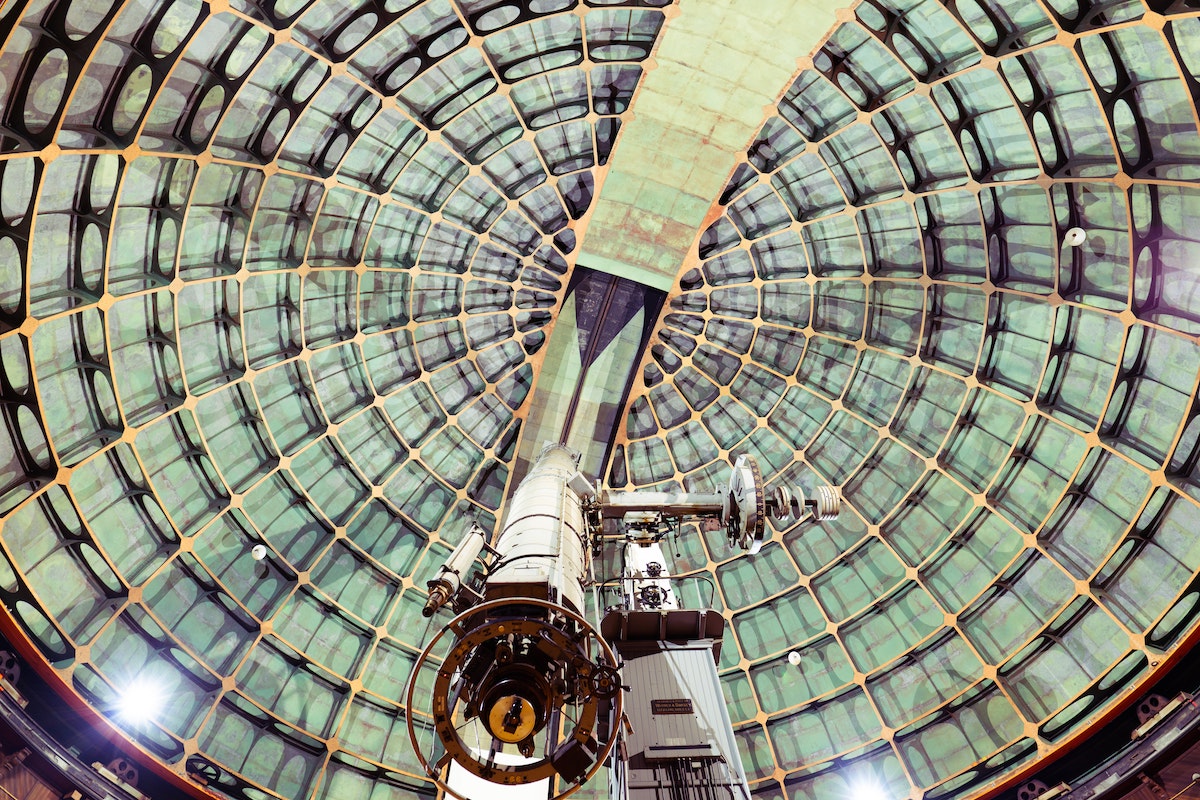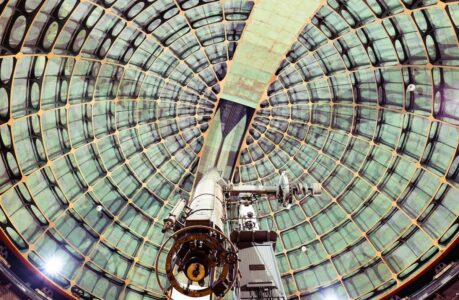When it comes to setting up a telescope, choosing the right mount is crucial. There are two main types of mounts: the equatorial mount and the altitude-azimuth (alt-az) mount. Both types have their advantages and disadvantages, and choosing the right one will depend on the user’s specific needs and preferences.
The equatorial mount is designed to track the movement of the stars across the sky. This is accomplished by aligning the mount’s polar axis with the Earth’s axis of rotation. The polar axis is then used to control the movement of the telescope in right ascension and declination, which are the two coordinates used to locate objects in the sky. This type of mount allows the user to easily track objects as they move across the sky, making it ideal for observing and imaging celestial objects.
The alt-az mount, on the other hand, operates in a more intuitive manner, allowing the user to control the telescope’s movement in a more natural way. This type of mount operates by controlling the telescope’s movement in altitude and azimuth, which are the two coordinates used to locate objects in the sky from the observer’s point of view. This type of mount is ideal for visual observations, as it is easier to use and does not require the same level of precision as an equatorial mount.
One of the main advantages of the equatorial mount is its ability to track the movement of celestial objects. This makes it ideal for long-exposure imaging, as the telescope can be left to track the object without the need for constant adjustments. This allows the user to take long exposures without having to worry about the object moving out of the field of view.
Another advantage of the equatorial mount is its ability to automatically correct for the Earth’s rotation. This means that objects will remain in the field of view for much longer periods, making it easier to observe and image them. This is especially important for objects that are difficult to observe or image, such as distant galaxies or faint nebulae.
However, the equatorial mount also has some disadvantages. One of the main drawbacks is its complexity, as it requires a precise alignment with the Earth’s axis of rotation. This can be time-consuming and requires a good understanding of the mount’s operation. Additionally, the equatorial mount is typically larger and heavier than the alt-az mount, making it more difficult to transport and set up.
The alt-az mount, on the other hand, is much easier to use and does not require the same level of precision as the equatorial mount. This makes it ideal for visual observations, as the user can simply point the telescope in the direction of the object they want to observe. Additionally, the alt-az mount is typically lighter and more compact than the equatorial mount, making it easier to transport and set up.

Another advantage of the alt-az mount is its ability to rotate in all directions, making it easier to observe objects at low altitudes. This is especially important for observing objects such as the Moon and planets, which are typically found at low altitudes in the sky.
However, the alt-az mount also has some disadvantages. One of the main drawbacks is its inability to track the movement of celestial objects. This means that the user will need to make constant adjustments to keep the object in the field of view, which can be time-consuming and frustrating. Additionally, the alt-az mount is less suitable for long-exposure imaging, as the object will move out of the field of view after a short period of time.
When to use an equatorial mount
An equatorial mount is ideal for use when observing or imaging celestial objects that move across the sky, such as stars, galaxies, and nebulae. The equatorial mount’s ability to track the movement of these objects makes it ideal for long-exposure imaging, as the telescope can be left to track the object without the need for constant adjustments. Additionally, the equatorial mount’s ability to automatically correct for the Earth’s rotation means that objects will remain in the field of view for much longer periods, making it easier to observe and image them.
This type of mount is also ideal for users who are looking to take their observing and imaging to the next level. The equatorial mount’s precision and complexity require a good understanding of its operation, but the rewards for mastering this type of mount are well worth the effort. With an equatorial mount, users can achieve stunning images of celestial objects that are difficult or impossible to observe with an alt-az mount.
In summary, an equatorial mount is ideal for use when observing or imaging celestial objects that move across the sky, when the user wants to take their observing and imaging to the next level, and when they are willing to invest the time and effort to master the mount’s operation.

When to use an alt-az mount
An altitude-azimuth (alt-az) mount is ideal for use when the user is primarily interested in visual observations. The alt-az mount’s intuitive operation makes it easier to use, as the user can simply point the telescope in the direction of the object they want to observe. Additionally, the alt-az mount’s compact and lightweight design makes it easier to transport and set up, making it ideal for users who are looking for a more portable observing setup.
The alt-az mount is also ideal for users who are new to astronomy, as it does not require the same level of precision and understanding as an equatorial mount. This makes it a great option for users who are just starting out and want to learn more about the night sky without being overwhelmed by the complexity of an equatorial mount.
Another advantage of the alt-az mount is its ability to rotate in all directions, making it easier to observe objects at low altitudes. This is especially important for observing objects such as the Moon and planets, which are typically found at low altitudes in the sky.
In summary, an alt-az mount is ideal for use when the user is primarily interested in visual observations, when they are looking for a more portable observing setup, when they are new to astronomy, and when they want to observe objects at low altitudes in the sky.
Which mount is right for astrophotography
When it comes to astrophotography, an equatorial mount is the preferred option. The equatorial mount’s ability to track the movement of celestial objects makes it ideal for long-exposure imaging, as the telescope can be left to track the object without the need for constant adjustments. Additionally, the equatorial mount’s ability to automatically correct for the Earth’s rotation means that objects will remain in the field of view for much longer periods, making it easier to capture stunning images of celestial objects.
The equatorial mount’s precision and complexity also make it ideal for advanced astrophotography, as users can achieve high-quality images of distant galaxies, nebulae, and other celestial objects that are difficult or impossible to observe with an alt-az mount.
In contrast, the alt-az mount’s inability to track the movement of celestial objects means that it is not suitable for long-exposure imaging. The user will need to make constant adjustments to keep the object in the field of view, which will result in shorter exposure times and lower-quality images.
In conclusion, for astrophotography, an equatorial mount is the preferred option due to its ability to track the movement of celestial objects, its ability to automatically correct for the Earth’s rotation, and its precision and complexity, which make it ideal for advanced astrophotography.

